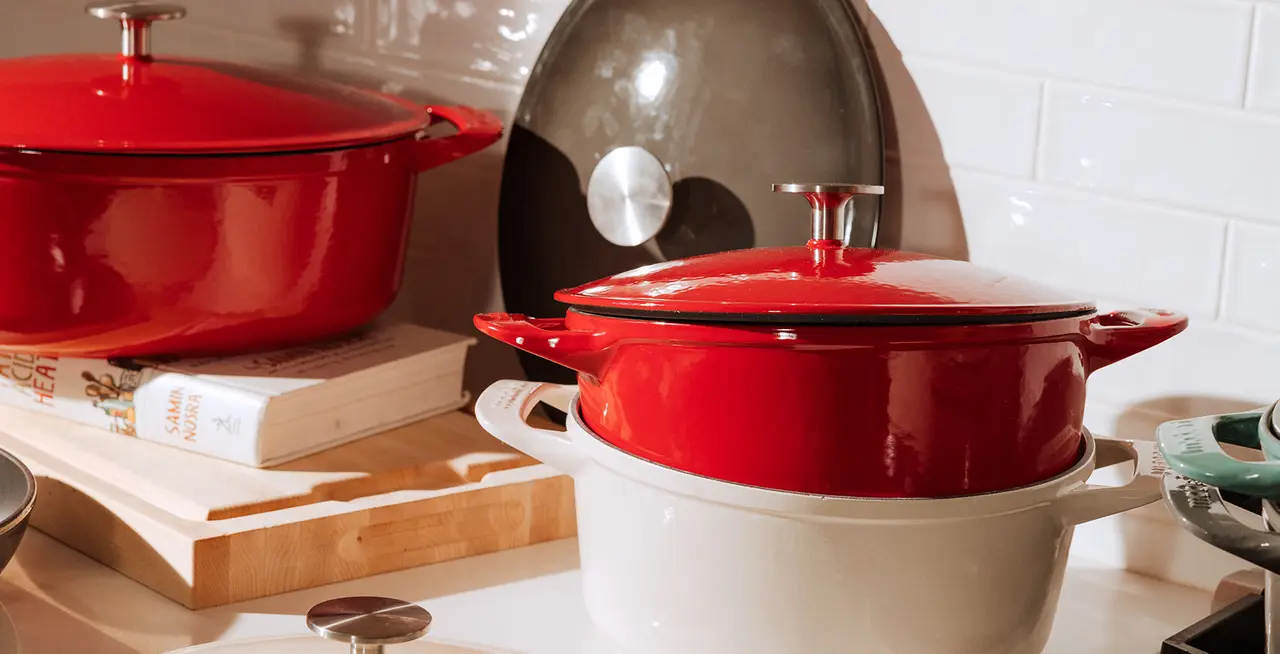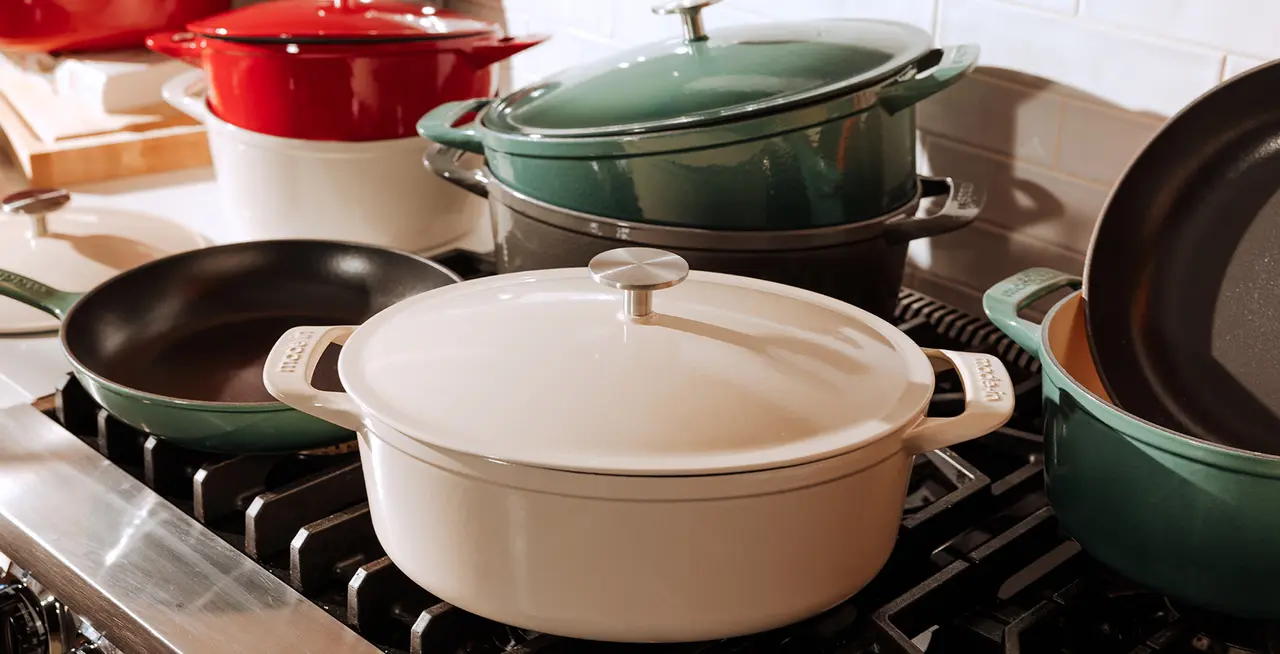We'll cut to the chase: the main difference between cocottes and Dutch ovens lies in their size. Dutch ovens are typically larger, more universally used, and come in more size options; while cocottes are the smaller, French version of Dutch ovens. The word "cocotte" is used interchangeably when describing smaller Dutch ovens, hence much of the confusion around when to use one word or the other.
Other than that (and to the untrained eye), they are quite similar pieces of cast iron cookware that can be easy to mix up. Read on for an in-depth look at the differences between these two pots, and which—if not both—are better for your kitchen needs.
What Is a Cocotte?

The cocotte is a small, heavy cast iron pot that typically comes in either an oval or circular shape. The cocotte (also called a "French oven") can be thought of as the French version of a Dutch oven, and is typically both much heavier and smaller in size than a standard size Dutch oven.
What Is a Cocotte Used For?
Most commonly, cocottes are used for baking, braising, stewing, and boiling. Due to their compact size and heavy-duty construction, they are excellent vessels for one-pot meals, liquid-focused dishes like soup or stew, or low-and-slow braises and bakes.
What Is a Dutch Oven?

Dating back to the early 1700s in parts of Europe, the Dutch oven is a cast iron pot that features a large capacity, tight-fitting lid, and handles on either side. These are offered in both unfinished cast iron and enameled styles, come in both round and oval varieties, and are typically considered essential pieces of cookware in most kitchens.
What Is a Dutch Oven Used For?
Like the cocotte, the Dutch Oven has a nearly unlimited number of potential uses in the kitchen, ranging from roasts to soups to braises.You can make any dish in a Dutch oven that you would make in a standard cocotte, including pot roasts and stews, though you will usually be able to make a larger serving in a Dutch oven.
Which One Should You Use?

Ultimately, the difference between cocottes and Dutch ovens lies in their size. Cocottes are typically smaller than a Dutch oven—often 3.5QTs or smaller—while a Dutch oven can be 7QTs or larger.
This means that ultimately, both a cocotte and Dutch oven have their place in your kitchen. A cocotte can handle smaller holiday sides or enough food for one or two, while a larger Dutch oven is well-suited for larger proteins and more people. If you don't yet have a Dutch oven, we recommend investing in a versatile, mid-size 5.5QT option before expanding to larger (or smaller) sizes.
Ready to Shop?
If you’re looking to add quality pieces to your cookware collection that will last a lifetime, then any piece in our French-made Enameled Cast Iron Collection is for you. The Dutch Oven features our proprietary Cloud Cover Lids that self-bastes your meals, a classic shape, and hand-applied enamel, making it as useful and versatile as it is beautiful.






























